(The following halachic analysis regarding the practice of reclining during the Pesach Seder is based largely on an exposition from the sefer Yerach L’mo’adim, Pesach, vol. I, § 44.)
The tenth chapter of maseches Pesachim outlines the procedure followed at the Pesach Seder, and one of the first items it mentions is the practice of reclining. As the Mishnah states (10:1):
וַאֲפִלּוּ עָנִי שֶׁבְּיִשְׂרָאֵל לֹא יֹאכַל עַד שֶׁיָּסֵב.
“Every member of Yisrael – even a pauper – does not partake in the Seder without reclining.”
As unequivocal as this statement might appear, we shall see that the matter may not be so simple in actual practice.
Exemptions
First of all, there arises the issue regarding contemporary reclining – are we obligated to do so, even in our times? Conventional wisdom and universal observance seem to indicate that, in fact, we do. The halachic codes (e.g., Tur), however, cite the opinion of the Medieval commentator the Ra’avyah, who contends that the obligation to recline does not apply to our times. This is because through the act of reclining we display a sense of freedom and relaxation, demonstrating thereby that we have been freed from bondage. In earlier times, it was customary for diners to recline while they ate, something that has fallen out of practice. Thus, it is no longer considered “the usual manner” for us to eat while reclining; rather than a demonstration of freedom, it would constitute something unusual and inconvenient.
The Shulchan Aruch (Orach Chaim § 472) rules contrary to the Ra’avyah, thus mandating heseibah (reclining) even in our times. And such is our actual practice. But even here, the matter is not so simple. The Rama (ibid.) proceeds to state that women in our times do not recline; and the reason he supplies is because they rely on the ruling of the Ra’avyah.
But this, notes the Aruch Ha’Shulchan (Orach Chaim 472:6), is something of a puzzle; why, he wonders, would women be exempt any more than men? It is true that the Gemara states explicitly that women are exempt (Pesachim 108a). However, the Rama himself, in earlier remarks, clarifies that the Gemara was referring only to the women in the Gemara’s times; the women of later generations, who were considered more “dignified,” were obligated in the mitzvah of heseibah in the same manner as their husbands. Now, the Ra’avyah, who declared that the practice of heseibah is no longer applicable (as people are no longer accustomed to recline while they eat), stated his position in a universal manner – that is, he exempted both men and women. The bottom line is that, for all intents and purposes, men and women today seem to share the same level of obligation when it comes to heseibah. The Shulchan Aruch ruled contrary to the Ra’avyah; why, then, is his opinion relied upon only as it relates to women?
Dual Obligation
Resolving this issue requires a closer look into the reasons and source for the practice of leaning. As stated above, the conventional understanding relates to the directive to demonstrate, on this night, our status as newly liberated individuals who have just experienced the Exodus. As we recite in the Haggadah: בְּכָל דּוֹר וָדוֹר חַיָּב אָדָם לִרְאוֹת אֶת עַצְמוֹ כְּאִלּוּ הוּא יָצָא מִמִּצְרַיִם – “In every generation, a person is obligated to view himself as if he
himself has left Egypt.”
R’ Binyamin Paler points out, however, that there is yet another imperative to engage in reclining, this one stemming from the beginning of this week’s parshah. The passuk reports on the route Yisrael took upon leaving Mitzrayim: וַיַּסֵּב אֱלֹקִים אֶת־הָעָם דֶּרֶךְ הַמִּדְבָּר – “And G-d led the nation around, by way of the desert” (Shemos 13:17). While the word “va’yaseiv” translates literally as “led around,” the medrash (Shemos Rabbah 20:18) relates it to a word stemming from a similar root – none other than heseibah (וַיַּסֵּב / הֶסֵיבָּה) . According to Chazal, then, the passuk alludes to the fact that when Hashem took Yisrael out of Mitzrayim, He had them relax and recline; and the medrash even concludes that the mitzvah of heseibah is derived from here. What emerges, then, is that one who reclines actually fulfills two separate directives: as we have seen above, he thereby demonstrates that he is a free man, and as we see now, he also commemorates the event of Yisrael’s own heseibah upon leaving Mitzrayim.
The issues outlined above are thus resolved in light of this critical information. Yes, the Ra’avyah’s contention that heseibah is no longer applicable in our times relates, inherently, to men and women equally. However, his exemption applies principally to the first aspect of heseibah – namely, the demonstration of freedom. Since leaning is for us an unusual activity, it would not appropriately display a sense of relaxation on our part. But this notion is relevant only for the directive of “displaying cheirus (freedom).” We have just learned that there is a second imperative to recline – and that is to commemorate the actual heseibah that took place at the time of the Exodus. In this instance, the intent is not so much to demonstrate freedom as it is to re-enact the activity of heseibah in commemoration of Yisrael’s experience at that time. This obligation, then, would apply even in our times – regardless of whether or not it constitutes “usual” or “unusual” activity.
This, then, could account for the distinction between men and women of today. The well-known general rule states that women are exempt from any time-related mitzvos (Kiddushin 29a). There are certain exceptions to this principle for various reasons, but one of them relates to the mitzvos of the Seder. Women are in fact obligated in the bulk of the Seder-related mitzvos, such as eating the matzah, drinking the wine, and relating the story of the Exodus. As such, they are also subsumed in the first aspect of heseibah, which, as we have seen, is essentially a corollary of the mitzvah to relate the Exodus and feel as if we are freshly liberated from the bondage of Egypt. And as stated, it is this aspect which, in the view of the Ra’avyah, is no longer applicable today for anyone – for we do not thereby feel or demonstrate liberation and relief. When the Shulchan Aruch rules, however, that heseibah is obligatory in our times (for men), the reference is to the second aspect of heseibah, that of commemorating the heseibah of parshas Beshalach. This aspect remains unaffected by the Ra’avyah’s exemption. Nonetheless, as it is considered a “separate” mitzvah, it reverts to the general rule governing time-related mitzvos. As such, men are obligated, while women are exempt.









